Federico Tesio wrote (a good thirty years ago): “The winner of a race is the horse who reaches the finish line first – in other words the horse that covers the distance in the shortest time.
A jockey cannot make his mount cover a distance in a time faster than the natural ability of the horse allows. He can, however, make him cover it in a slower time. Take horse A and B. A can run 1000m in 61 seconds and a mile on 99 seconds. B on the other hand, takes 60 seconds for the 1000m and 102 seconds for the mile. When these horses race over 1000m B will win, while over the mile the winner should always be A. But supposing that the jockey riding A over the mile would be holding back his mount a little at first so that he would run the distance in 103 seconds instead of his possible 99 seconds. This would allow his rival B to pass him, and win in 102 seconds. This is the kind of mistake jockeys make in a race, because they do not realise that distance should not be measured with a yardstick, but with a stopwatch, by the time it takes to cover the distance.”
Tesio refers of course to the pace of a race. A true pace will reveal true ability, a false pace will give a false result, that is a result which is unlikely to be reproduced was the race to be run again. Use a race run at false pace to establish a base handicap and the result will be sure disaster. The essence of handicapping is correct reading of races. Americans and Frenchmen are indeed lucky to have interval-times provided for all races, to get a true picture of how races are run.
The challenge of handicapping
A handicapper familiar with the scales and tables needed to establish the true ability of a horse has a decisive advantage over the vast majority of those who frequent our racecourses. But unless a handicapper is capable of understanding what happens in a race, and what suits which horse, that advantage counts for little. The greatest challenge in handicapping lies in the evaluation of races. The assessment of the ability of the horses follows almost as a matter of course, provided the tables and scales are used correctly, and provided the handicapper is prepared to put in the time to establish a base handicap and keep it updated as time goes on. His rewards are manifold. He will be able to evaluate races by comparing the relative ability of the horses running, select those with the best chances and so be able to keep his betting pay in the long run. He will be able to use the information relating to ability if he ever gets involved in breeding. And he will get much more enjoyment out of his racing than most people do. Handicapping is a matter of discovering how good a horse is, and under which circumstances that horse is most likely to reproduce his best.
How to handicap
The first part is largely a simple mathematical process, not horses, but numbers on a piece of paper. The factors are provided by historical information, emerging gradually from a jungle of connecting links of form, comparing horses one against the other until a solid basis has been established n which all horses racing can be placed. Not difficult, but tedious and time consuming. Judgement only comes in to decide what information to use and what not to use, in other words which races can be used as a true measure of ability and which cannot. That is where skill and experience count most.
Handicapping is nothing more or less than establishing how good a horse is, and expressing that as a figure. The article titled “Anatomy of a Handicap” has shown us that ability of horses can be expressed in terms of weight. That provides us with a scale on which all horses can be put, from the best to the worst. If the basis on which the scale is established is right, it is very difficult to make major mistakes – or rather, to make mistakes that go unnoticed for an extended period of time. Everyone makes mistakes, but a handicapper with a sound base-handicap will at least be able to rectify mistakes quickly.
Ability
The most misunderstood part of handicapping is that horses do not increase their ability as they grow older and stronger. Ability is there right from the start. All the horse does is making what is called Weight-for-Age improvement, which with the simple WFA-scale can be translated into the same figure the horse’s ability is measured in. There is absolutely no doubt, and I mean absolutely none whatsoever, that once a horse has had a few runs as a 2yo its ability is revealed. A sound long handicap for 2yo’s tells which horses will reach the A-Division, which reach the B-Division which might win a maiden and which will never win – the rest of their career is crystal clear, provided they stay sound (impossible to foresee, of course) and provided they make the normal WFA-progress that 90% of horses make as a matter of course.
It is up to the skilled trainer to discover over which distance the horse is best, what going suits and what going doesn’t, and how the horse must be ridden to ensure that the horse is given the opportunity to reproduce its ability. Those are factors some trainers discover very quickly, others never – that may be due to the professionalism of the trainer, or if they’re just plain unlucky their horse will run in a number of false run races that clouds the picture terribly. The professional trainer will study the conformation and breeding of each of his horses to get an indication of what the horse should be good at, and race it accordingly to test his theory. But not many do. And a trainer who can handicap is a rare bird indeed.
Dick Whitford, one of the early pioneers (with Phil Bull) of Timeform in the UK, had a spell as manager for Jack Gerber’s horses in the early 50’s. He placed the horses in races simply on the basis of his long handicap, with great success. Ryan Price, no mean trainer in his own right, dubbed Dick “The Genius”, while Sir Gordon Richards used to shake his head in admiration and mutter “uncanny”, as another Whitford calculation worked out. But Dick is down to earth. “I’ve got a reputation: people think I’m good, but all I’m doing is sums. Sometimes I have horses toprated which I’m convinced have no possible chance, but I cannot alter their figures for my own satisfaction. I’m stuck with them. They’re no guesses. It’s not skill or cleverness on my part when they win at 10/1 or 20/1. I’m driven to it by the sums I do. The thoroughbred is absolutely unique in the animal kingdom. Nothing ever has had the attention, the care and the study devoted to it than the race horse and at the end of 300 years of very seriously applied biology we’ve got something that’s like a little clock and I do sums with it and the sums work out.”
It’s surprising and tragic that the Whitford’s of this world, even now 30 or 40 years later, are still quite unique. Most students of form (and that includes newspaper tipsters and the major form guide in this country) concentrate on recent form. They find a good percentage of winners allright, but the starting prices of these horses are such that a profit is impossible to make in the long run. Only the true handicapper will be able to find the long-priced so-called “upsets” that keep the kitty filled over time.
Ignorance rules
So why don’t more people handicap? Once again the answer is education. People are plainly ignorant of the basic facts of handicapping. Literature on the subject is hard to come by, experience takes time. Ignorance rules. There are people in racing for whom I have great respect as judges of horses, people who have proved themselves in racing when I was still in nappies. But those same people still give me arguments about so-many-time winners who should not give weight to horses that won more races – with handicapping that has nothing to do whatsoever. Handicapping is establishing how good a horse is and under what circumstances. The “how good” part does not change. It’s there, never mind whether the horse won 10 races or only one. But what those people refer to perhaps is handicapping as practiced by the official handicapper, within the framework of a pattern of racing that exists within a centre or centres of racing as we know it here in South Africa. And that is quite another kettle of fish.
Official vs DIY
Do not confuse the task of a self-confessed handicapper with that of the official handicapper, employed by the Racing Clubs. It is his task, in handicaps, to weigh up a race in such a way that all horses have the same chance of winning, to provide an open betting market and to attract as large a field as possible. This is a daunting task. A perfect example to illustrate this was the 1985 running of the 2yo Langerman handicap, over 1500m at Milnerton. There was a large entry and immediate discontent with the weights as soon as they were published. Centre of controversy was the horse Amberlad, who by most “experts” was regarded to be thrown in at the weights and consequently opened up a short price favourite. Since part of the handicapper’s task was to provide an open betting market, he had clearly gone wrong here. Tragically not quite his fault, but a result of general ignorance of the handicapping process, and the fallacy of “two-time winner must give weight to one-time winner” syndrome.
The subsequent running of the race (which attracted a reasonable but not large field) vindicated the judgement of the handicapper more than a little, with three horses finishing virtually within a length of each other, all ridden out. Yet the loser in this race was the handicapper, because of the betting market and the size of the field, right as he may have been in assessing the ability of the horses running and taking into consideration the difficulty of assessing 2yo’s over a measure of ground (1500m is quite a test for youngsters, and pace plays a large role in the question of seeing out the distance), without any formlines over the distance to go by. But that too will have escaped most of the critics. The existing approach to handicaps in South Africa makes the task of any official handicapper, intent on preserving the tradition of what a real handicap is, virtually impossible – yet what is the point of appointing the best man for the job and then have him crucified by people who do not know the first thing about handicapping? Don’t get me wrong, I too have my criticism, but at least I can see what the official handicapper is trying to achieve, gagged and bound by rules and tradition, restrictions which fortunately do not apply to me. Heaven forbid!
South African handicaps
As far as run-of-the-mill handicaps go, South Africa really is a country where handicaps are not handicaps. In Natal and on the Rand racefigures are used to frame handicaps, a fallacy about which I can only repeat myself. In the Cape A and B Division handicaps aren’t real handicaps either. The reason is that no other races for this class of horse are available, so that the handicapper has to find a balance between his own handicapping, judgment, and the fact that A and B handicaps must be run according to the rules of graded racing, where an automatic penalty applies for winning. This has of course nothing to do with “real” handicapping, which is based on true ability of horses, which for the majority of horses really does not change over time. But imagine what would happen to a handicapper who would not punish a horse that through superior tactical riding wins a false run race by 3 lengths (a race that would provide a different result were it to be run again) = the handicapper would have every right to discount the race as false run and frame the same weights for a future race over the same distance with the same runners, but probably would lose his job in this funny racing world where loudly voiced ignorance prevails over sense, knowledge and expertise.
As it stands, the only true handicaps in the whole of South Africa were those run in the Cape for C-Division horses, the horses for which conditions races also exist in the form of Progress races, so that there is a true alternative for those that do not wish to subject themselves to the evaluation of the official handicapper. After all, a trainer or owner not satisfied with what the handicapper thinks of his horse in handicap-terms must have the opportunity not to run his horse. In the A and B-Division races that alternative does not exist; for C-Division horses it indeed does. Fortunately there is a large number of horses available to race in these events and it is to be hoped that trainers will make skillful use of these opportunities. Newly introduced as these races are in the Cape, there should be little doubt that they will prove a successful addition in the long run, especially for those horses that in grading terms have reached their platform of “number of wins allowed”, and who should not be able to win again in true run races. Or similarly, early in the season for new 3yo’s, when a large number of these with rather widely varying ability compete against each other, leaving the stakes in the graded races always to the best – handicaps (for both the 3yo and the older horses) would therefore attract those horses that could not readily win in graded races, while graded races would be left to the better horses, a combination which serves all aspects of exciting and competitive racing.
Solution
The best that could be done for racing in South Africa is the promotion of handicapping, both in educational and official terms. The best (official) handicap is one which does not tie the official handicapper down and at the same times gives other interested parties (including the public!) a fair indication of how the horses are rated. The best solution to this seems the system as employed by the British, where handicap ratings are allocated in groups, each covering a weight range of a number of pounds. By adopting such an approach the official handicapper slots his horses into Divisions of (say) 2kg. Assuming that he is a good handicapper, his horses are most unlikely to move over more than one category up or down during the course of a year (or even years). He has, if viewed across two categories, 4kg to play with, which is ample. If horses are not exposed in his opinion, he should not be forced to handicap them until he can, so as to avoid malpractices. He will have a long handicap split into age-segments, for 2yo, 3yo and 4yo upwards. Each segment is set on the same scale, so that it is clear at a glance how horses of different ages compare, provided they make the required WFA-progress – their real ability is exposed right from the start. The scale of this handicap must be level from year to year. A sensible scale would be to follow the Timeform-scale, but expressed in kilos. This would give an effective scale ranging from 60 to about 90 (with a comparable Timeform rated horse at 144 earning 100 on the kilo scale), and a mean average of about 74 kilos. The handicapper now has an effective range of about 20 kilos (allowing for rapidly decreasing numbers of horses at either end of the 60-to-90 kilo scale), and then groups of 2 kilo segments to play with. He can now tailor the programme of handicaps to the available horse population at a given time – and achieve the best for everyone.
The brain game
Racing is a game of skill. Skill in placing horses from the trainer, skill from the racegoer to find winners. In the current racing climate skill is not encouraged. Trainers are prevented from using it, racegoers are left totally uneducated – few of them have any idea what this game is about. By publishing his long handicap, the handicapper can make great strides towards the promotion of the use of skill. If everyone can see where the horses are, everyone can with little effort suddenly handicap. It then becomes a matter of pitching your wits against the uncertainties of pace and tactics, or suitability to course going and distance – all the things that make racing really exciting. And naturally, the long handicap provides clues to the outcome of non-handicap races as well ! Also, it will show up irregularities, give opportunities for stipes-investigations that everyone can understand and expect – not the half-hearted and clumsy PR-exercise the stipes currently display in dealing with so-called reversals of form, which really do not do any good at all. A public long handicap published by the official handicapper is in the utmost interest of racing’s good name and attraction. It will get the news media away from their own amateurish attempts to handicap on short formlines, and open the door for a more educational evaluation of races on the day. Handicapping is the core of racing. The more that is done to promote its understanding, the better for everyone in racing – now and especially for the racing enthusiast of the future, probably the most forgotten group of our day.
Have Your Say - *Please Use Your Name & Surname*
Comments Policy
The Sporting Post encourages readers to comment in the
spirit of enlightening the topic being discussed, to add opinions or correct
errors. All posts are accepted on the condition that the Sporting Post can at
any time alter, correct or remove comments, either partially or entirely.
All posters are required to post under their actual name and surname - no anonymous posts or use of pseudonyms will be accepted. You can adjust your display name on your account page or to send corrections privately to the Editor. The Sporting Post will not publish comments submitted anonymously or under pseudonyms.
Please note that the views that are published are not necessarily those of the Sporting Post.
4 comments on “Weighing Up Races”
Leave a Reply
‹ Previous



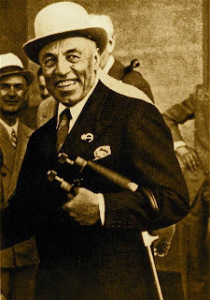
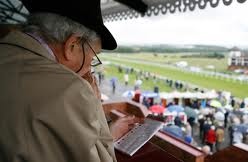
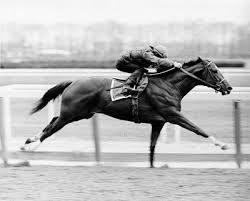
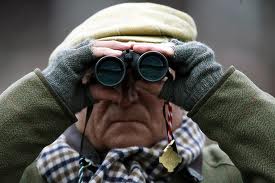

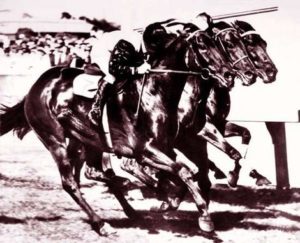
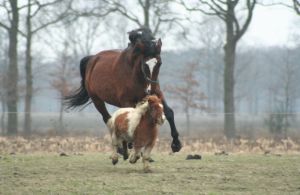
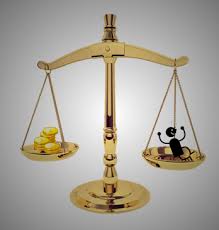
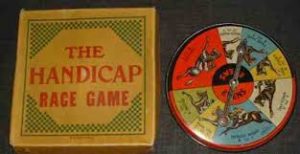

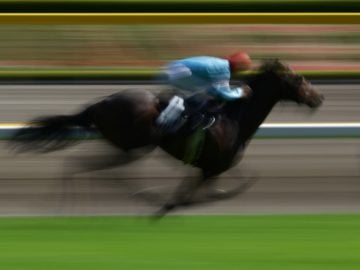
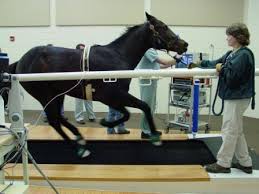
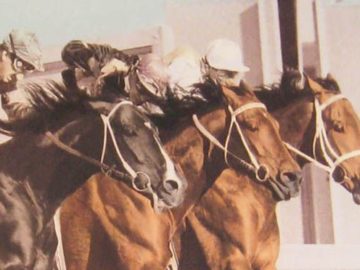

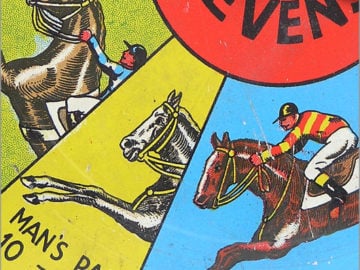





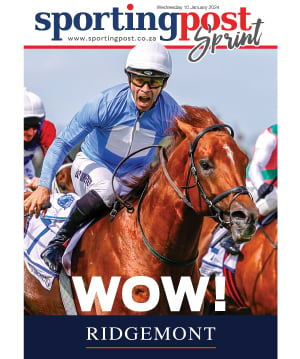
Horse racing has been quite a popular sport over the years and makes quite a lot of money not only for the horse racers but for the people betting on them as well, its not so complicated to understand what goes on there but its complicated for the racers and the horses involved i would assume.Horse racing has become glamorous i don’t know if the Durban July counts but there are so many idea that people have come up with over the years to make money in this sport and i think i gets them generous return as well. Are Horse bred in Farms as well? There are many Game Breeding Farms
all over South Africa that breed Animals to sell are Horses one of them? Because this can make one a lot of money.
well done, very good article,
With regards to handicapping. There are a lot of important factors to consider. I’m from the old school trainers starting in racing 1966. The most important factor is the horses well being and fitness. There after all other factors comes into play. Is your horse a sprinter. Middle distance or long distance stayer.then do the horse like dry or wet surfaces to race on. The horses action also plays part importance. Then comes the the racing factors. Is it a false pace.slow or fast run race. The time of the races is a important factor to. As time factors are very important. To measure a horses performance. I’m against the merit rating system in my opinion it’s not in the best interests of racing. Also to allow a individual to rate a horses ability with out working with the horses from day today .and only judges a horse on a run on the day is very false and wrong in my opinion. The merit rating system is harmful to racing the horses and their owners and trainers. Period. Happy racing guys
Mr. Mills there is one important factor you do not have to consider.
And that is whether a horse likes wet surfaces to race on.
Not in South Africa, You do not have worry your head about the surfaces
Horse is not allowed to race over wet surfaces in South Africa in the last couple of years
Heavy going is unheard of in South Africa